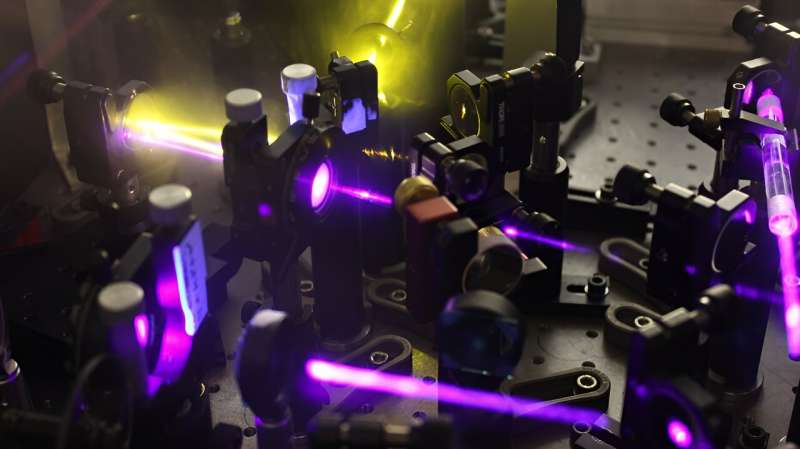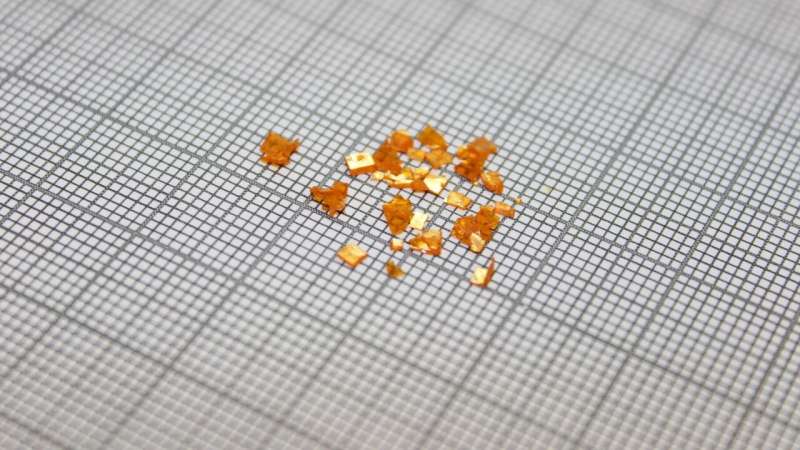This article has been reviewed according to Science X's editorial process and policies. Editors have highlighted the following attributes while ensuring the content's credibility:
fact-checked
peer-reviewed publication
trusted source
proofread
Novel organic-inorganic semiconductor generates circularly polarized light

A research team under the direction of Prof. Dr. Felix Deschler at Heidelberg University's Institute for Physical Chemistry has developed a semiconductor that efficiently generates light and simultaneously gives that light a certain spin. According to the researchers, the so-called chiral perovskite material has great technological potential that can be used for applications in optoelectronics, telecommunications, and information processing.
Generating bright, circularly polarized light has long been a goal of materials science. It is considered exceedingly difficult to achieve a distinct chirality—which describes the rotation of light in a specific direction—as well as high photoluminescence quantum efficiency (PLQE). The PLQE value expresses the ability of a material to emit light. Inorganic semiconductors are able to emit high brightness but usually exhibit low light polarization.
In contrast, organic molecular semiconductors do have high polarization, but their brightness is often limited by losses due to dark conditions. "Until now, a material that truly combines the high luminescence quantum efficiency of inorganic semiconductors and the strong chirality of organic molecular systems has been lacking," reports Felix Deschler.
To simultaneously obtain the desired brightness and high polarization, the Heidelberg research group developed a hybrid metal-halide perovskite semiconductor with a layered structure. The scientists integrated a customized chiral organic molecule into the perovskite structure as a hybrid component.
Using a small aromatic molecule with a precisely placed halogen atom in the aromatic ring gave rise to novel chiral perovskites with the structural designation R/S-3BrMBA2PbI4. "The ability to alter the structure so dramatically and yet still retain good material performance underscores the ability of perovskite materials to tolerate distortion in the crystal structure," explains doctoral candidate Shangpu Liu.

Owing to their greatly distorted crystal structures, chiral 3BrMBA2PbI4 perovskites exhibit a noticeably better degree of circularly polarized luminescence than other materials even at room temperature. Aided by sophisticated ultra-fast laser spectroscopy measurements, the researchers were able to unravel the processes behind the generation of this special light. The values found for polarization and brightness exceed those known for previously used chiral semiconductors.
The researchers were also able to show that the novel materials are extremely promising for applications that rely on circularly polarized light. They implemented the materials in light detectors that can record and differentiate the chirality of the incident light. Furthermore, the research team developed light-emitting diodes from which light can be generated from electricity.
The research was conducted as part of the ERC Starting Grant "Twisted Perovskites—Control of Spin and Chirality in Highly-luminescent Metal-halide Perovskites" led by Prof. Deschler. The results were published Science Advances.
More information: Shangpu Liu et al, Bright circularly polarized photoluminescence in chiral layered hybrid lead-halide perovskites, Science Advances (2023). DOI: 10.1126/sciadv.adh5083
Journal information: Science Advances
Provided by Heidelberg University




















